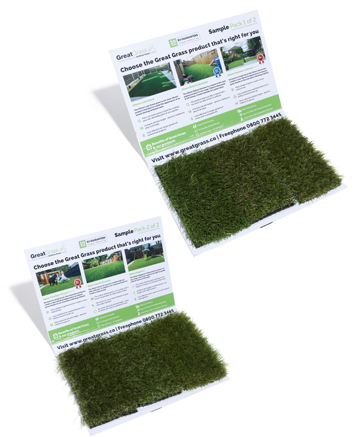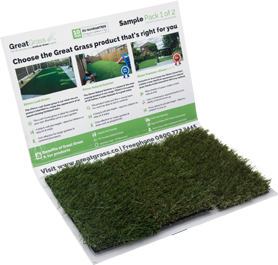Here at Great Grass we understand that installation can be quite tricky, so we are going to give you a brief description on how to install your artificial grass the easiest way possible. There are 2 types of installations; installation on hard and solid ground or replacing your old artificial grass. We have worked out the best way to install your grass and its right her for you!
Hard and solid ground:
- Make sure that the surface you are covering is clean and smooth. You can apply a self-levelling compound, this compound will remove surface imperfections, which is a particularly good idea if the grass you are laying is very low/short.
- Unroll or Lay the grass onto the now clean and level area you are covering. Makes sure you allow around 50mm of grass on each side. This is because you will need to trim off the excess to ensure a perfect edge. Leave the grass for two-to-three hours to settle, this will stop it wrinkling or creasing.
- Cut and trim your artificial grass, by using a sharp Stanley knife to ensure that you cut the grass straight.
- To make the joins, use grade A outdoor tape and glue and following the instructions on the product. If you have a wooden surface, such as decking or suspended floor boards, you can use them both, in a combination of adhesive and carpet, then use tacking hooks to fix the grass down.
Existing lawn replacement:
- Work out the height that you want your grass layer to be. Then work out the height of the materials you will be installing. Make sure you include layers of geotextile weed barrier, sub-base to prevent unwanted weeds growing through your lawn.
- Take up the grass, either by hand for small areas and comers or use a turf cutter for a large area. Also, take out some subsoil depending upon the height of your top soil, but never build your base on topsoil.
- Compact/flatten the ground using a vibrating plate or roller (n.b. you can hire these at a good equipment hire centre)
- Spray weed killer then put down a geo-textile weed barrier on to the area.
- Ensure the grass is not higher than the final grass line so that you don’t hinder the water run-off, and could cause large unsightly (and sometimes damaging) puddles forming when it rains
- Using either a layer of a finer stone of between 6mm and 14mm of coarse sand, Compact with the vibrating plate or roller and top up as you need to, to achieve your desired level.
- Lay or unroll the grass on top of the sand rather than dragging it.
- (Repeat steps 2-4 from instructions above.)
- If you are using edgings, put natural stone paving or logs against them. If you are not using edgings, hammer in some landscaping nails every 50mm approximately.


